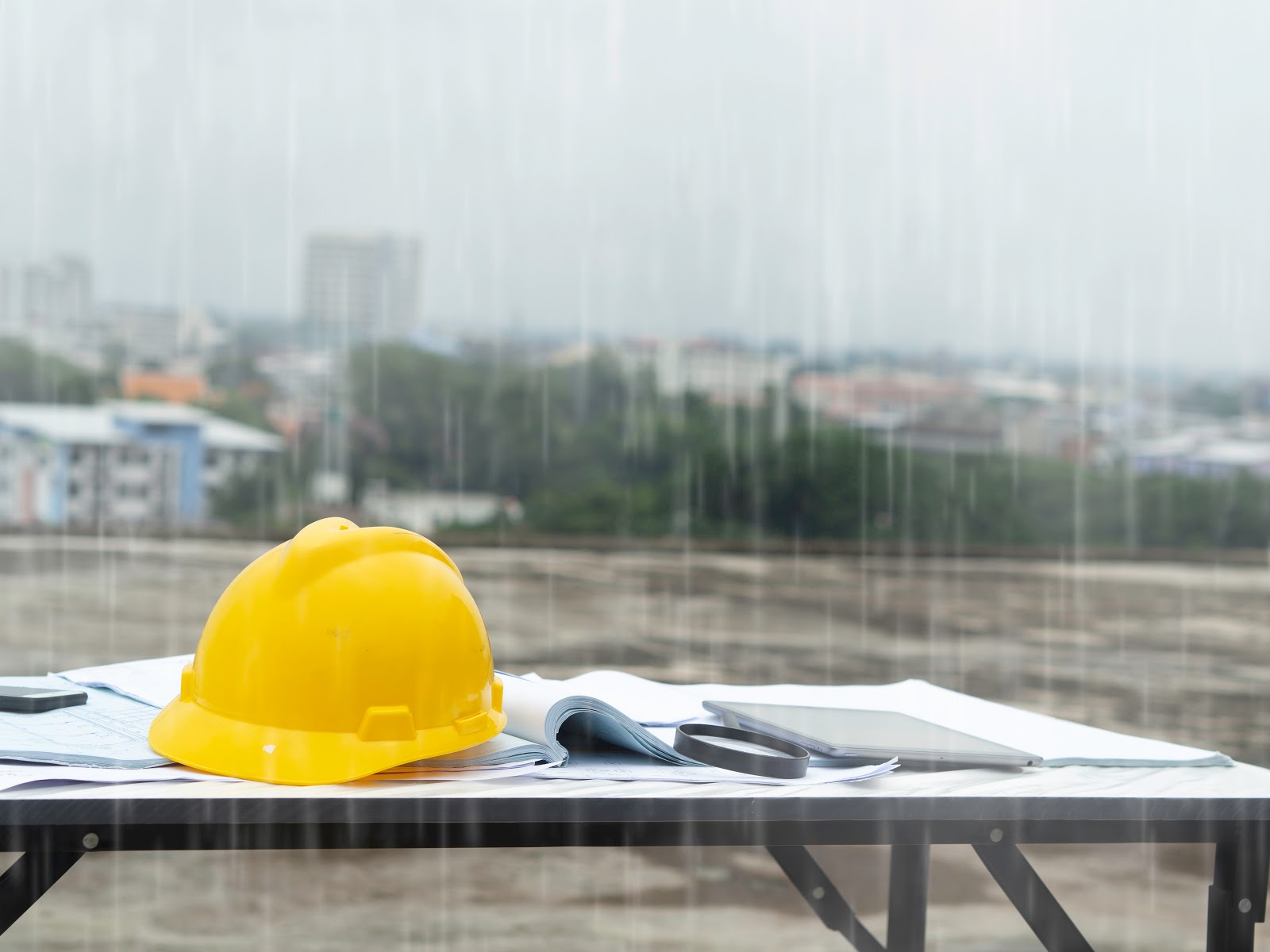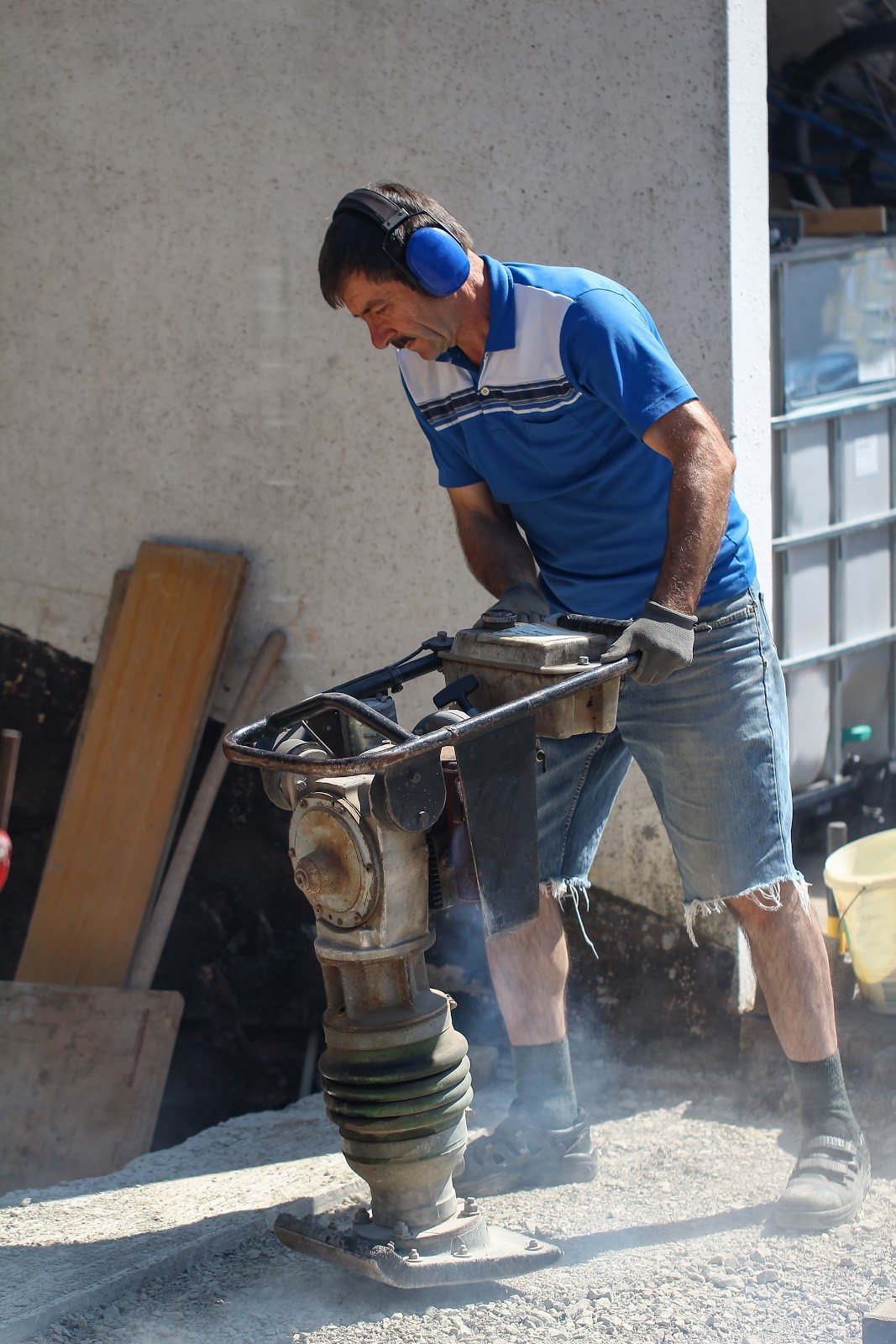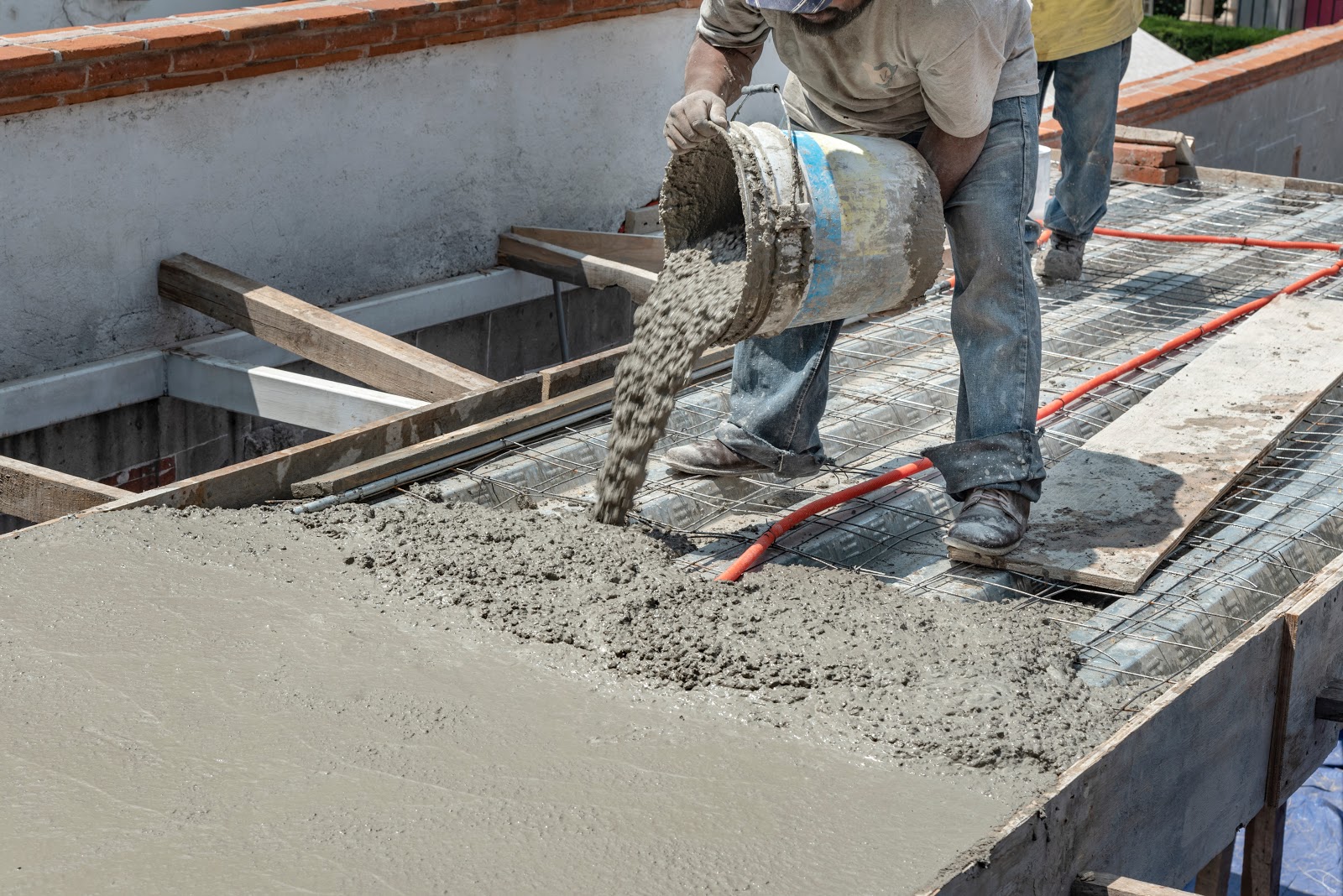Queensland is notorious for its wet weather seasons. While we may be living in the Sunshine State, we’re all too familiar with the rain and tropical storms. They not only dampen a fun day at the beach, but they can also ruin the chance of carrying out construction work and home renos. Sometimes the rain doesn’t have to cause significant delays – especially if you’re a professional and are well equipped to work in wet weather. However, if you’re a novice in using construction equipment in damp work environments, you can get yourself in some trouble if you decide to persevere through the rain. Due to a lack of experience, you may not understand what dangers to look out for and how to prevent problems from occurring. So, to get you up to speed with risks involved in working in wet weather and what safety precautions to follow, this article outlines some key tips for inexperienced construction workers or DIYers.

Beautiful One Day. Rainy the Next….
While we Queenslanders are quite blessed with beautiful weather a majority of the time, there are certain months that really like to challenge our ‘sunshine state’ status. Our tropical climate makes our weather, at times, unpredictable; that being said, there are certain times of the year when we know to expect the rain. Travel and climate guides for Queensland indicate that the wettest months are from December to March typically. Therefore, be wary when undertaking a new project during these months. While the surrounding months see less consistent rainfall, there are always those days where the weather creeps up on you. If you’re in construction or have started working on home projects, you will likely face a wet weather scenario at some point or another, so it’s important to know what measures to follow to stay safe.
It’s Just a Bit of Rain, Right?
While yes, rain can seem fairly innocuous on a worksite, it can also be extremely deceiving. Wet conditions make equipment and surfaces a lot more slippery, compromising your stability. Soils and materials can also change in texture and consistency, leading to foundations collapsing or machinery becoming bogged down. Diving in headfirst without thinking of the risks in this type of situation might not only result in damage to machinery, but it can cause injury to yourself and others – or worse, death. In 2018, the construction industry has the second-highest number of work-related traumatic injury fatalities, right behind the agriculture, forestry, and fishing industry, according to the QLD Office of Industrial Relations. The construction industry also has a fairly high claim rate, with over 46 claims per 1000 people in 2019. This is behind wholesale trade and manufacturing in Queensland, according to the Office of Industrial Relations. That being said, this is within the context of large scale construction projects; you’re relatively safe working within smaller or at-home jobs, but there are always risks.
Risks, Injuries and Precautions to Follow in Rain and Storms
The most common injuries caused by wet weather on construction sites (whether that’s at home or on-site) are slips, trips and falls. Especially when at a height (on the roof, up a ladder, or on scaffolding), falling is dangerous. Add some water and you’ve got serious potential for an injury. Another less common problem to be mindful of is strong winds. This can cause materials and sediment to fly through the air, potentially causing injuries or ruining projects. Be wary of what material you are leaving outside – sheets of metal, plastic, or ply – which could catch the wind and cause some damage.
It goes without saying but electrical machinery or equipment should always be put away during rain and storms. As we all are aware, water and electricity do not mix together well, or at all for that matter. Make sure to unplug, turn off, and store all electrical equipment undercover at the end of the day. Not only will water potentially destroy this equipment, but electrocution can cause injury and even death.

In addition, in lightning storms, being around metal machinery means leaving a path for lightning to follow as metal conducts electricity. If you are touching machinery or are inside of the machinery, you also increase the risk of getting hit. When lightning is present, it’s just a much better idea to be inside a building or house and away from tall or metal surfaces.
However, even when there’s no lighting around and you deem rain to be fairly moderate, driving and maneuvering construction machinery can be tricky as visibility from all sides has been greatly reduced and controlling the machine is a lot more complex. Therefore, it might be better to save using your big toys for when it dries up or on a sunny day.
Overall, working in wet weather requires the use of common sense. Trust your gut. If completing a certain task makes you feel unsafe or using a certain machine makes you uncomfortable, stop working. It’s up to you to make that call, especially on DIY projects. Don’t push through for the sake of getting the job done by a certain timeframe – this may put you at risk of injury.
If you have deemed the conditions safe enough to work in, you can take your safety a step further by wearing the appropriate wet weather gear. Pick up some waterproof clothing, wet weather shoes, and anti-fog glasses. After all, getting sick is yet another risk.
Unsure of the specific risks relating to your project and hire equipment? Talk to one of the friendly Ryno Hire team members who are happy to advise you of the specific safety precautions you should follow for your job. They can also organise an extended hire period for you if you think you’re going to experience some delays due to the wet weather.
What Jobs you Should Specifically Not do When it is Raining
Depending on the amount of rain and task you’re undertaking, there are some jobs which are probably alright to do in the rain. Light excavation work during a light shower is fine as long as you’re paying attention to your surroundings and surfaces and are keeping an eye on the conditions; however, other jobs require just waiting it out. The jobs below specifically require dry conditions for them to be safely and effectively completed.
- Cement pouring
- Painting
- Roofing jobs
- Deep excavation
- Any driving over uneven surfaces

Other Things to Consider
Sometimes rain has the unfortunate side effect of prolonging a project. This is something that you should keep in mind. Depending on the severity of the rain, parts of your site can become eroded or misshaped. For example, if you have dug out areas of land, heavy rain can cause the surrounding sediment to fill up the excavated area or erode any mounds or hills. Further, already dug up holes can fill with water, becoming another issue for you to resolve later. Consider laying down a tarp to protect your work from becoming disarranged by the elements.
Save it For a Rainy Day
When you want to work outside but the weather says no, it may be just the perfect time to catch up on those odd tasks from inside your home. What odd jobs, you ask? Let’s run through some tasks you may have not realised need completing in your home.
- Fixing or putting up shelves
- Putting up curtains
- Repairing cupboards
- Building an inbuilt desk
- Patching up holes or scratches on your walls
- Replacing light bulbs
The rain most certainly won’t last forever – not in Queensland anyway! And soon enough you will be outside again getting stuck into whatever project you have chosen to immerse yourself in this time. Don’t have a project idea in mind? Let these articles inspire you. Read about how you can completely transform your home by giving your front yard a refresher or learn about the many useful ways a retaining wall can add beautiful features to your home. Happy DIYing!
Ryno Hire is a local family-owned equipment hire company passionate about giving Australians the right tools to get their dream projects completed without the hassle of hiring professionals. Dry hire is the best solution to wanting to get your projects done affordably and in time – and it’s easier than you think. Enquire about Ryno Hire’s services today to learn more.


